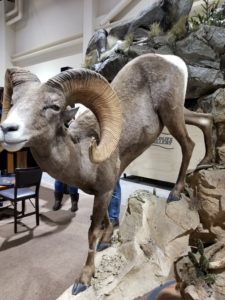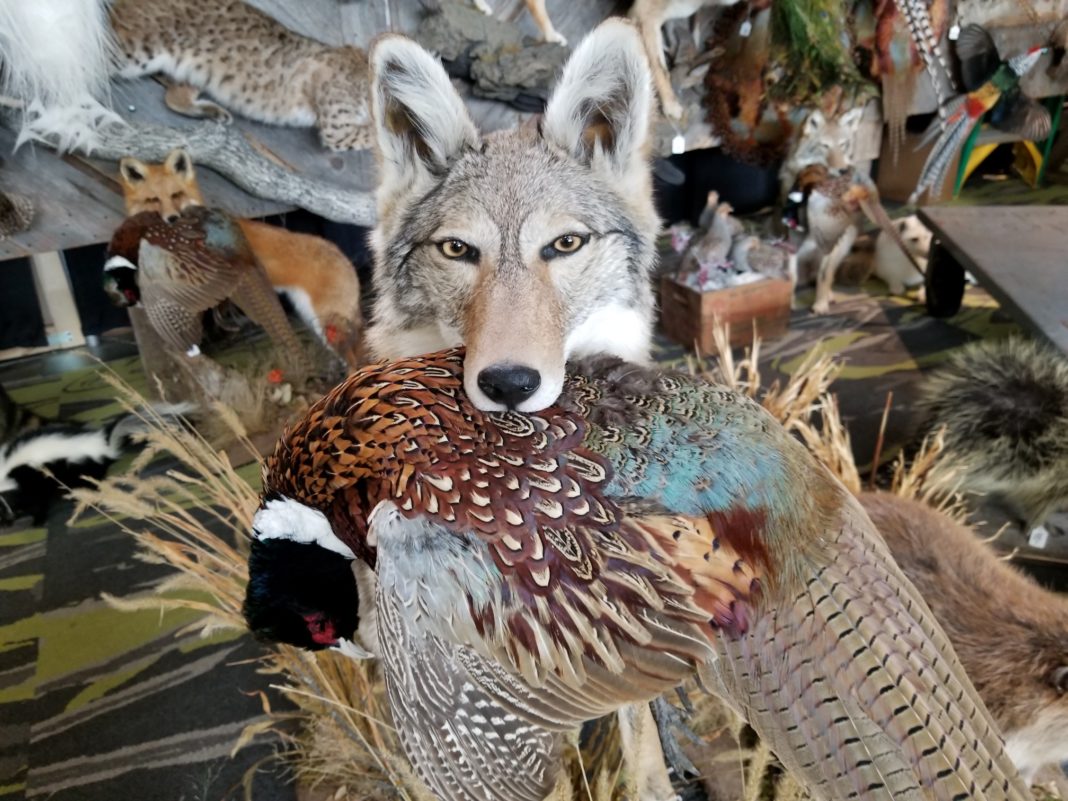I’m at the Safari Club International Annual Convention in Reno Nevada (www.showsci.org) and absolutely in awe of the taxidermy that surrounds me. With hundreds of Professional Hunters and taxidermists at the show, I asked “What’s the best way to preserve an animal mount to last for a lifetime.”

Dan Catlin is a Vice President of The Wildlife Gallery and a frequent guest host on outdoor TV shows. “I’ve hunted around the world and am really passionate about taxidermy and seeing that hunters get the most realistic taxidermy possible,” he said. Here are suggestions to help you get your trophy from the field to that special place of honor.
- Don’t wash off the cape- “It’s not ideal to introduce water to an animal skin because it builds bacteria. And if you do, dry it off as best you can. Especially with a deer, blood stains will disappear in the tanning process. Sometimes you can’t avoid getting the cape wet so let it drain and dry as much as possible.”
- Where to cut for a shoulder mount- “ When caping a deer you want to cut just beyond half way from the front to the back legs. With the animal lying flat on the ground determine half and then go toward the hind legs a little further. You can always cut extra hide from the mount, but you can’t add it. Also, if you want a wall-pedestal, a very popular wall mount, skin the front legs all the way to the hoof.”
-

Consider a life-size or interactive mount to preserve the memory of the hunt. Do you take the head off or cape it out completely? “That’s a loaded question these days due to regulations governing CWD. We used to advice skinning the animal up to the head and then cutting it off. Today, that may be illegal if you are transporting it across state or county lines. In those cases, skin the head completely or take it to a local taxidermist and let him or her do the work. Do a search on google to find out the regulations.
- Special tools needed for Taxidermy? “Not really,” Catlin continued. “Taxidermy is a very basic skill and your best tool is a sharp knife. It helps to have a knife sharpener with you so that you can do the job carefully. Be sure to turn the ears so that they dry properly.
- How’s the best way to store a cape? “Let it cool, put it in a plastic bag and put it in your freezer, flesh-side in and hair side out. Make sure that all the heat from the animal has dissipated and get it in the freezer. In a wilderness situation, get as much meat and fat off the hide and then introduce salt. If you do that, let it dry. Putting a salted hide in the freezer will counter-act the freezing process and may cause cape to spoil.
- Think ahead. “I’ve been to Africa six times and on adventure hunts its not a bad idea to visit a taxidermy shop before the hunt. In this way you can get an understanding what a mounted species may look like. Like wise at hunting shows. SCI has some of the best taxidermy displays in the world so use your cell phone and take a picture to show your taxidermist what you want.”



















![The Best Deer Camp Chili [VIDEO] Deer Chili Ingredients, Tomatoes, Chili Spices](/wp-content/uploads/2015/10/Deer-Chili-Deer-Camp-Recipe-218x150.jpg)
![How to Call Elk Early in the Season [VIDEO]](/wp-content/uploads/2016/08/byers003-218x150.jpg)




![Idiots Disturb Hunter: How Would You Have Handled It? [VIDEO]](/wp-content/uploads/2015/10/DSC00110-e1474487693878-100x70.jpg)
![Albino Buck Shocked to Shed His Antlers [VIDEO]](/wp-content/uploads/2015/10/AlbinoDeer-100x70.jpg)